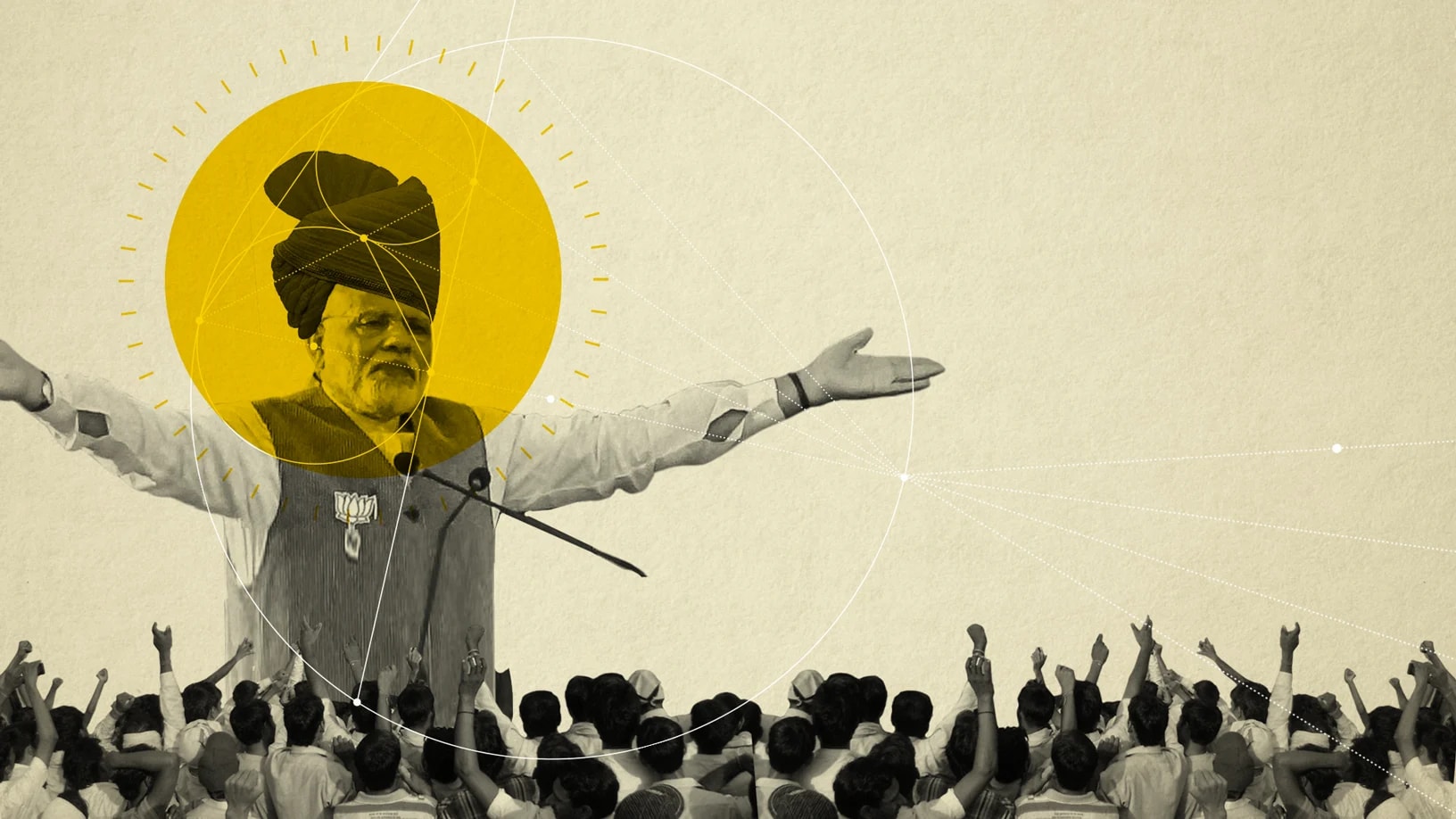Emotion Trumps Reason
There simply isn’t a good reason for the designer to take note of the Indian elections. And even less reason to call it and venture to guess the result. Apart from the obvious risks, the design lens seems too underpowered to bring an election into its focus.
If one sees design as a primarily visual field, the commentary on an Indian election might seem rather bare. Unlike, say the US elections, Indian election campaigns aren’t designed, or not in a sense that professionals or their audiences (that’s you) would recognise.
But seeing the deep design of things requires us to transcend appearance, and consider communication more broadly. It is the designer’s task to observe and interpret the world, keeping an ear out for the unspoken.
So consider the campaign not as designed object but as a totality of impressions: actions, speeches, statements, media reports, advertising and the like. Upon reflection, the signalling value of these acts appears. Their diversity coalesces into a grand narrative, the meta-communication behind the words.
the campaign not as designed object but as a totality of impressions: actions, speeches, statements, media reports, advertising and the like. Upon reflection, the signalling value of these acts appears.
Marketers will recognise this as way brands come to take root in a genuine, cultural sense. as a whole comprised of its many acts: advertising, products, pricing, distribution, the company image and many others.
In recent US elections, graphic design has been conspicuously recruited in the service of the campaign. Big name talent is called in. Perhaps it’s intuitive that these examples of designed campaigns are from Democrats, the side of the fence more readily associated with the intelligentsia and by extension, the arts. Here, relatively arcane things like typeface choices have been noticed and commented upon enthusiastically, as in Obama’s campaign, to which the cult street artist Sheperd Fairey contributed a memorable image. The Hillary campaign employed a sophisticated visual identity system designed by Michael Beirut, a celebrated designer.

(L) Barack Obama ‘Hope’ poster by Shepard Fairey, (R) Trump Pence logo
On the other hand Republican campaigns, from Reagan onwards have tended towards visceral nationalism. Here, overt visual design seems beside the point, and even weak. Trump’s campaign, visually speaking, was criticised as crude. Did design cost Hillary?

The Hillary campaign identity designed by Michael Beirut
Indeed, visceral campaigns and leaders of this sort have been a feature of recent years. Many, including this column, have commented on the rise of a certain type of leader: anti-intellectual, earthy strongmen who speak plainly and speak tough.

Indian election campaign materials.
Visceral campaigns and leaders of this sort have been a feature of recent years. Many, including this column, have commented on the rise of a certain type of leader: anti-intellectual, earthy strongmen who speak plainly and speak tough.
They speak of trade isolationism, and an inward looking view of national self-interest, with a suspicion of multilateralism. They promise, and invoke a populist toughness, often reflected in the leader’s personal style. This toughness is positioned as a necessary antidote to impotent intellectualism. Their opponents are a foreign or sinister enemy presence; while opposed groups are de-humanised (macaques, termites, and so on) by various arms of the party machine.
Narendra Modi’s campaign, in which we must include his years of governance (much of it in campaign mode) are an example of this phenomenon. On the basis that emotions rule our preferences, the Modi campaign looks a far better bet than the opposition’s. It’s not just the PM’s oratory skills, and ignore the lows to which the speeches (on both sides, to a degree) have fallen. Admire the coordinated way in which national interest has been framed to tap into anxieties, and the opposition positioned as arrayed against it.

Indian election candidate Narendra Modi.
Thus the responses to the Uri and Pulwama strikes became the perfect opportunities for a public display of militarism. The film dramatising Uri become a top grosser. Pulwama’s magical timing, in this way of thinking, seems to have reversed the opposition momentum that sections of the press were talking up. Fear stokes, and belligerence quenches.
The stance on Kashmir may be criticised as insensitive but can be read as precise signalling to a certain popular mood. Demonetisation was a high impact display of visceral action in the same vein. Ignore the economic analysis of it as a failure (or success) and the political tactic it was alleged to be, as side-effects. The signal is everything: tough action unfettered by wimpish objections bleated by those entrenched in the black money system. The film portrayal of Manmohan Singh as a weak PM comes in handy as contrast (BJP supporter Anupam Kher played the ex PM).
Demonetisation was a high impact display of visceral action in the same vein. Ignore the economic analysis of it as a failure (or success) and the political tactic it was alleged to be, as side-effects. The signal is everything: tough action unfettered by wimpish objections bleated by those entrenched in the black money system.
The opposition counters these by positing an ‘idea of India’ (other attacks are tactical). It accuses the BJP of attacking institutions, both abstractions (democracy, secularism or liberal thought) and organisations (from film institute to central bank). But these are higher-order constructs, appealing to urban audiences and to considered, learned judgement rather than basic instincts. Corruption is a more workable route, but Rafale may have peaked too early. The opposition’s calling-the-referee type protests against distasteful language only signal weakness in the eyes of those who yearn for a strong leader.
Cultural referencing is the PM’s area of mastery, much more than the opposition’s. Chaiwala, and chowkidar may have caught the eye, but notice how Priyanka Gandhi’s playing with a sapera’s snakes was swiftly reframed as a colonial entertainment for the oppressors, by the oppressed. The analogy fitted poorly but the consistent painting of the young Gandhis as un-Indian resonated with decades of earlier references to their Italian-origin mother and English-minded great-grandfather. But it’s the young Gandhis’ very Indian grandmother that Modi channels: opponents as puppets of a foreign hand.
This is the cult of the strong leader capable of strong medicine with shades of adventurism. Evening television shows us citizens who acknowledge, but seem willing to ignore great gaps in their welfare, appearing to cling to the promise that the muscular leadership represents. If these gut-level feelings are indeed persistent, they will trump any appeal to reason. The Congress president had his moment when the PM’s wardrobe went wrong, but it is the sarkar, with a more emotionally directed campaign, who has the stronger suit.
This is the cult of the strong leader capable of strong medicine with shades of adventurism.
____________________
First published in a slightly modified form ‘Emotion Trumps Reason’ in Business Standard, 11 May in Deep Design, a fortnightly column by Itu Chaudhuri.

